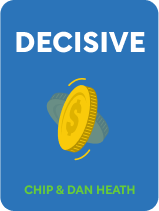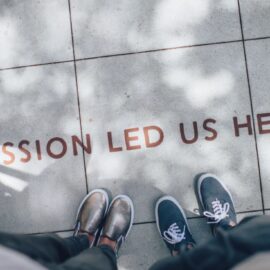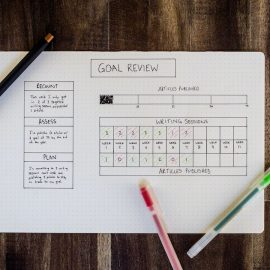

This article is an excerpt from the Shortform book guide to "Decisive" by Chip and Dan Heath. Shortform has the world's best summaries and analyses of books you should be reading.
Like this article? Sign up for a free trial here.
Are you facing a difficult decision? How do you make a decision when neither option is appealing?
When making hard decisions in life, first and foremost, consult your values. If you make a decision that contradicts your values, you’ll likely regret it down the road. Your core values are the guiding compass that will lead you in the right direction even when you don’t know your final destination.
Keep reading to learn about the importance of values in decision-making.
Clarify Your Values
When a decision feels emotionally fraught, it’s a sign that it may be a choice between one or more of your values. When making hard decisions that involve choosing between multiple values, clarify which of those values are most important to you.
| The Relationship Between Cultural Values and Decision-Making When clarifying your values, consider how the values that impact your decision may be culturally rooted. Research reveals that our cultural background influences whether we look inward or outward when we make emotionally fraught decisions. If your culture values individuality, you may make decisions by looking inward and determining your own wants and needs. By contrast, if your culture values collectivity, you may look outward and make choices based on what others expect of you. We can learn from both approaches. When you clarify your values for an emotionally-fraught decision, notice if you find yourself looking inward or outward. If this approach isn’t serving you, or if it isn’t helping you to manage your emotions and make a decision, consider taking the opposite approach. |
One value-clarifying technique that the authors recommend is a “stop doing list.” Business consultant Jim Collins created this technique.
- First, imagine receiving two phone calls: one telling you that you’ve been given 20 million dollars, and another sharing that you’ll die in 10 years.
- Next, ask yourself: What do you want to spend more time doing to make those last 10 years meaningful? What do you need to stop doing to make that possible?
- Finally, the Heath brothers add another step: Look at your schedule and remove everything you decided you want to stop doing. What you leave behind reflects what you value most, and what you cut reflects what you don’t value as much.
| Use Satisficing to Make Values-Oriented Decisions Jim Collins’s stop-doing list and the Heath brothers’ addition prompt us to ponder what we value most and identify ways that we’re wasting our time. But it’s possible that after these exercises, we’ll still be left with a list of multiple values. For the purposes of decision-making, how can we prioritize these remaining values? Psychologist Barry Schwartz, author of The Paradox of Choice, offers advice: Don’t expect you’ll find the perfect answer, and don’t overthink it. For a decision that concerns a choice between multiple important values, there may be no best choice. He recommends a decision-making strategy called satisficing: choosing an option that’s satisfactory, rather than perfect. His research shows that maximizers—people who take time deeply considering every possibility until they find the best one—are often more unhappy with their decisions. Let’s put the authors’ strategies and Schwartz’s advice into a real-world context. Imagine a person is deciding whether she wants to continue living in the city or move to the country. She sees herself as a “country person” at heart. But she also identifies as LGBTQA+, and there’s a larger queer community in the city. After making her “stop doing list” and analyzing her calendar, she finds that she equally values time in the country and time in community with other queer people. If she were to approach her decision as a maximizer, she may spend years searching for the perfect country town that also has a vibrant queer community—a search that may or may not yield any results. If she approaches her decision as a satisficer, she may miss out on living in that perfect town. But by making a choice, she can end the stress of deciding—and move on to brainstorming how to make that choice great. |

———End of Preview———
Like what you just read? Read the rest of the world's best book summary and analysis of Chip and Dan Heath's "Decisive" at Shortform.
Here's what you'll find in our full Decisive summary:
- Why our minds are wired to make bad decisions
- How biases and cognitive flaws distort your thinking
- A four-step process to improve your decision-making






